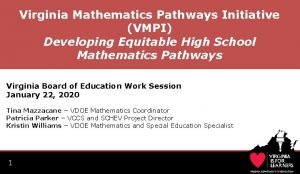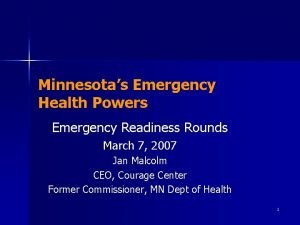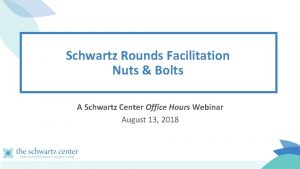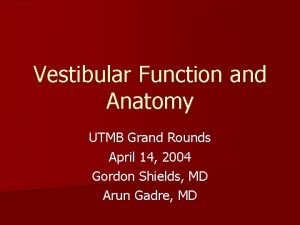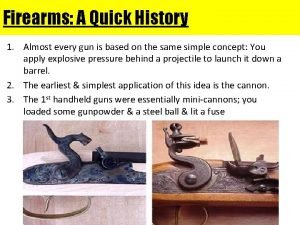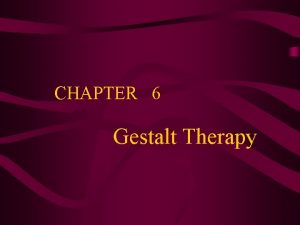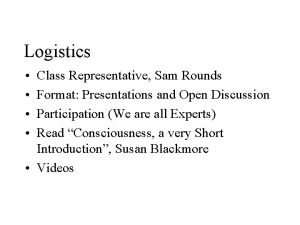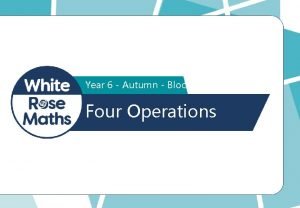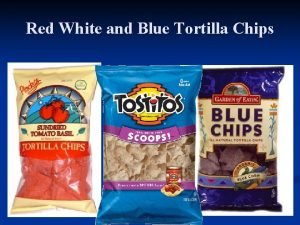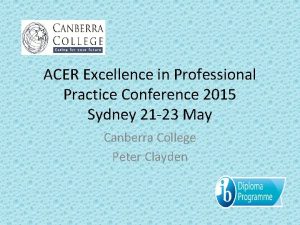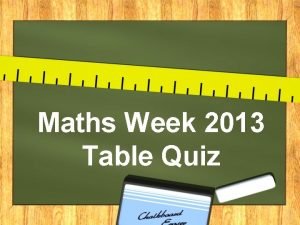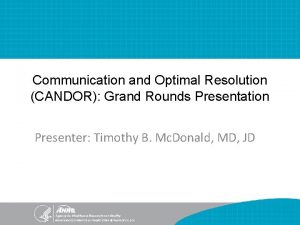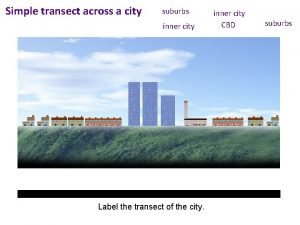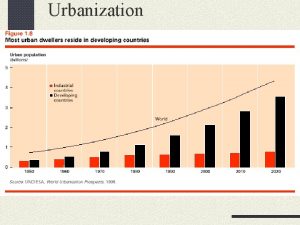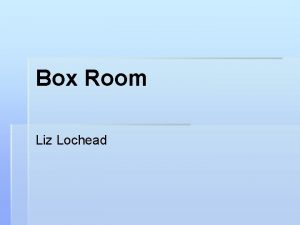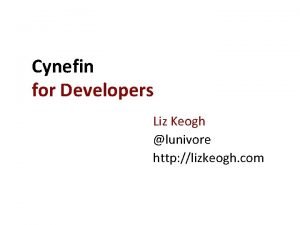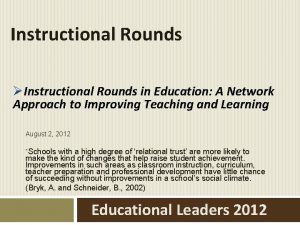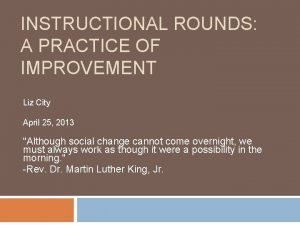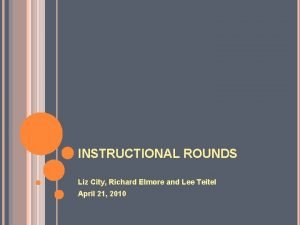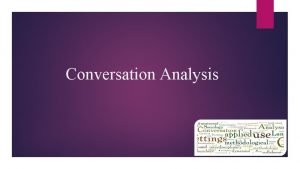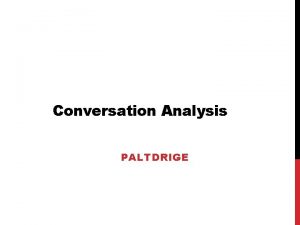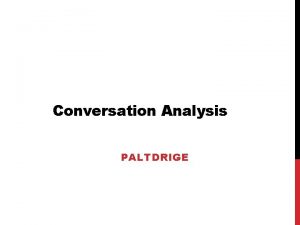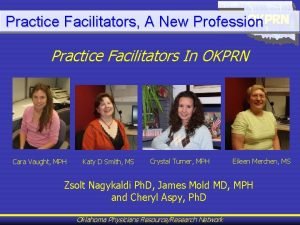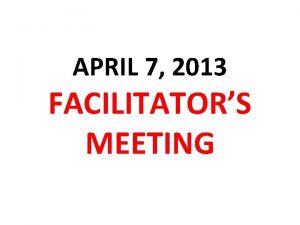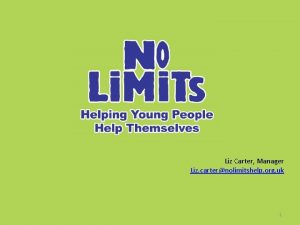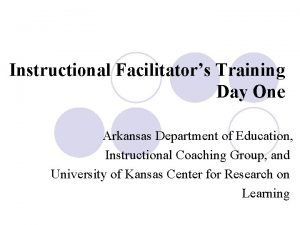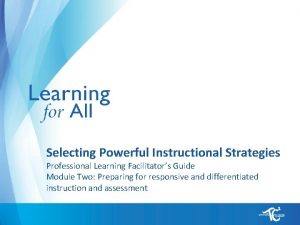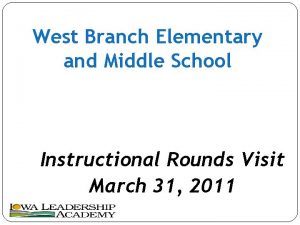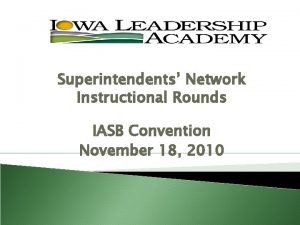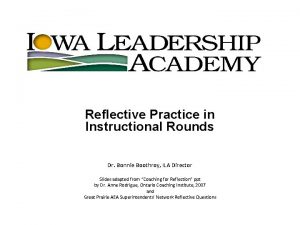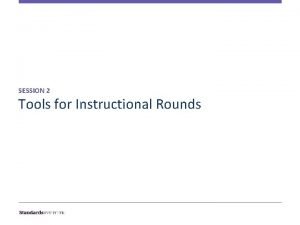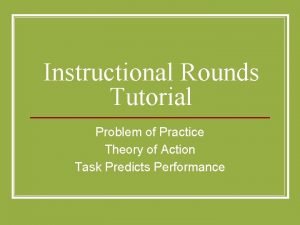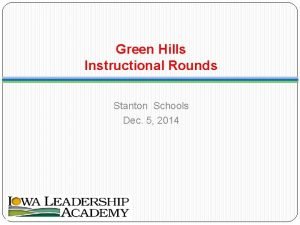INSTRUCTIONAL ROUNDS A Conversation with Facilitators Liz City





























- Slides: 29

INSTRUCTIONAL ROUNDS A Conversation with Facilitators Liz City and Lee Teitel April 20, 2010

OBJECTIVES AND AGENDA Objectives Agenda ü Identify the next level of Warm-up work in your individual Survey results and collective practice Problem of practice ü Leave with ideas about Lunch what to do to make Diving into the debrief your practice more Next steps for the effective network Wrap up

WARM UP—METAPHORS Which image best captures your year as a rounds facilitator? Choose one. Turn to a neighbor and explain how this image captures your year.

SUPERINTENDENTS’ NETWORK SURVEY RESULTS—APRIL 2010 Number of Responses AEA 267 Great Prairie n=72 (out of 117— response rate of 62%) Response rates varied by AEA 2 3 4 10 Prairie Lakes Mississippi Bend 5 Grant Wood 10 Green Valley 5 Northwest 6 9 8 Heartland Keystone Loess Hills

WHO PARTICIPATED? I have hosted a rounds visit 22% 42% Yes 58% 78% Superintendent Other No

PROBLEM OF PRACTICE

INSTRUCTIONAL ROUNDSA LEARNING PROCESS Classroom Observations Network District-wide Initiatives


HOW DO WE PREPARE FOR A VISIT? Logistics Schedule Observation Groups Rooms, meal, etc. Problem of practice development Product: getting a good POP to focus and guide the visit Process: developing ownership and connection of POP to on-going school and district improvement efforts

THE PROBLEM OF PRACTICE IS IMPORTANT BECAUSE IT. . . Focuses all aspects of the visit Represents a place where the combined efforts of the host school/district to improve student learning are “stuck” Provides a basis for learning for all members of network Helps keep the network focused, adding internal accountability for host/network learning Connects to the host’s improvement strategy

THE PROCESS OF DEVELOPING THE PROBLEM OF PRACTICE IS IMPORTANT BECAUSE. . . It models collaborative inquiry around improvement It involves key stakeholders It uses data to drive and focus instructional improvement efforts Tuning the POP reminds us of the power of the questions we ask It dramatically impacts how useful the rounds process is in influencing practice, particularly for the hosts (the next level of work really begins with the problem of practice. . . )

DEVELOPING A POP IS AN ITERATIVE AND (IDEALLY) COLLABORATIVE PROCESS The hosts brainstorm some possible problems of practice Sources People The facilitator (or in some networks, one or more peers) helps the hosts hone those possibilities into a draft problem of practice that will be fruitful for both the hosts and the network The hosts refine the draft, sometimes with more assistance from the facilitator or peers, into final form. 12

PROBLEM OF PRACTICE: PRODUCT CRITERIA Where does it come from? Grounded in some kind of evidence – best if it’s share-able Something you’re already working on, something you think you might need to work on (stuck place) Describes what's happening in the instructional core Actionable Observable High-leverage: If you acted on it, it would make a significant difference for student learning Connected to a systemic issue (has a connection to school/district theory of action) Something you care about—you need to improve in this area to reach your goals for students and you want to improve in this area 13

PROBLEM OF PRACTICE: PROCESS THEORY The more the problem of practice is integrated and owned by the school the more useful it will be The more teachers understand the rounds process AND The more teachers and the school community know about the problem of practice… how and why it was developed, how it ties in to the on-going improvement efforts of the school and district how the data from the visit will be used to help them… … the more likely they will be interested in the results of the visit and the more likely those results can be shared in ways that help the school. 14

SAMPLE PROBLEM OF PRACTICE: ROUND 1—HOSTS BRAINSTORM Are students being asked to do something more than remembering or literal recall? Are students doing more than “sit and get? ” What kinds of student engagement and participation are observed? Are teachers implementing literacy strategies (Writing to Learn) and/or CSR’s into their teaching? To what degree are the students engaged in these strategies? Differentiation Co-teaching

ROUND 2: FIRST TUNING Facilitators strategize together before meeting with hosts What’s our diagnosis of what’s strong/weak about this problem of practice? What questions are we going to ask to help tune the problem of practice? Facilitators and hosts meet Who’s in the room? What emerges as significant?

ROUND 3: HOSTS REVISE AFTER CONVERSATION WITH FACILITATORS P. O. P. (FOCUS) POSSIBILITY: Recent professional development at the high school has focused on improving student learning through implementing writing to learn strategies, infusing higher order thinking questions into lessons, creating quadrant D lessons, and creating course/unit essential questions. Teachers have collected data from writing to learn strategies as a formative assessment. We are asking for the following data to be collected: How are students demonstrating their thinking? 1) What tasks/questions are being asked of students in the classroom? 2) What evidence of student thinking are teachers collecting? 3) How are the students being supported in their writing?

ROUND 4: NETWORK PROPOSES REVISIONS Hosts’ revision How are students demonstrating their thinking? 1) What tasks/questions are being asked of students in the classroom? 2) What evidence of student thinking are teachers collecting? 3) How are the students being supported in their writing? Proposed further revision from network How are students demonstrating their thinking? 1) What responses are students providing? 2) What work are students engaged in? 3) What are students writing?

ROUND 5: FACILITATORS CONSULT WITH ANOTHER COLLEAGUE o o o Deepen the problem statement: Network visitors need a good understand of the underlying problem of practice. Why has PD focused on these strategies? What has been going on with student learning, and what has the instructional practice looked like related to that student learning problem? What focus questions best help us collect evidence to illuminate that problem? Stick close to the hosts’ questions, and offer suggestions for adjustment. Leave question #1 (What tasks/questions are being asked of students in the classroom? ) --it's more specific and clear than proposed revision #2. For #2, I'd take the teachers out and say something like, "What evidence of student thinking do you see and hear? " and then in the network I'd talk about what that evidence might look like, with student responses being one of them (both written responses and verbal responses). And then for #3, I might try to combine the two versions: "What are students writing? How are teachers interacting with students about their writing? "

ROUND 6. . .

LUNCH “A problem is nothing more than an opportunity in work clothes. ” – Michael Michalko

DEBRIEF DILEMMAS

GOALS (AND TENSIONS) IN THE DEBRIEF Develop the capacity of network members to have a rich conversation about instruction based on the visit Maintain strong connections between and among each debrief stage– description, patterns, predictions, NLOW Share across small groups to Learn what differences other saw Learn and discuss how others may be looking at and making sense of same data Develop a fuller picture of the school to solidify patterns and predictions and shape NLOW Leave a useful and actionable product for host

FOCUS OF INQUIRY VS. PROBLEM OF PRACTICE Dilemma—How do we make this about inquiry, not evaluation? Does it have to be a “problem”? Areas people get stuck with problem of practice Implementation check/monitoring (tipoff: yes/no) Learning problem not evident; focus on teachers, not students Not connected to ongoing improvement Not a stuck place, something we want to learn about

WHEN/HOW DEBRIEF? Dilemma—How to assemble body of evidence and distill it into something useful for the school and our own learning? Dilemma—To use a framework or not to use a framework? . . .

NEXT LEVEL OF WORK Dilemma: How to help people actually DO something with the data? . . . What seems to matter for how/whether hosts do something with data: Who’s involved Form/helpfulness of information (digestibility) Authenticity of problem of practice Existing systems and structures for improvement Accountability, particularly internal Overall tone

NEXT STEPS FOR NETWORKS

END OF YEAR CONSIDERATIONS Membership movements: closing with those who are leaving; adding and orienting new members Recommitment: reconnecting to norms and more Reflection: what did you learn; what do you want to improve on as a network next year Expansion or variations for next year: expectations and opportunities around follow-up work in your districts Facilitator training and support for all of the above

WRAP UP Takeaways Next steps: artifacts for evaluation; 2010 -11 schedule and expectations Plus/delta
 Richard elmore harvard
Richard elmore harvard Virginia equity math
Virginia equity math Promotion structure
Promotion structure External facilitators advertising
External facilitators advertising Congratulating expressions and responses
Congratulating expressions and responses Maintenance rounds
Maintenance rounds Readiness rounds
Readiness rounds Conventional dimensioning
Conventional dimensioning Schwartz rounds facilitator training
Schwartz rounds facilitator training Utmb grand rounds
Utmb grand rounds Firing pin marks
Firing pin marks Perls 5 layers of neurosis
Perls 5 layers of neurosis Sam rounds
Sam rounds Round off 75 to the nearest 10
Round off 75 to the nearest 10 Duke family medicine and community health
Duke family medicine and community health A is an odd number which rounds to 100 000
A is an odd number which rounds to 100 000 Red, white & blue bite size rounds tortilla chips
Red, white & blue bite size rounds tortilla chips Quality teaching rounds coding sheet
Quality teaching rounds coding sheet Maths quiz rounds names
Maths quiz rounds names Nursing grand rounds presentation example
Nursing grand rounds presentation example Griffin ford model of the latin american city
Griffin ford model of the latin american city Hoyt model
Hoyt model Primate cities
Primate cities Local colour liz lochhead
Local colour liz lochhead Box room poem
Box room poem Good morning liz
Good morning liz Dept of finance and administration
Dept of finance and administration Liz keogh
Liz keogh Appeal to ridicule fallacy
Appeal to ridicule fallacy Liz larosa 5th grade science
Liz larosa 5th grade science

